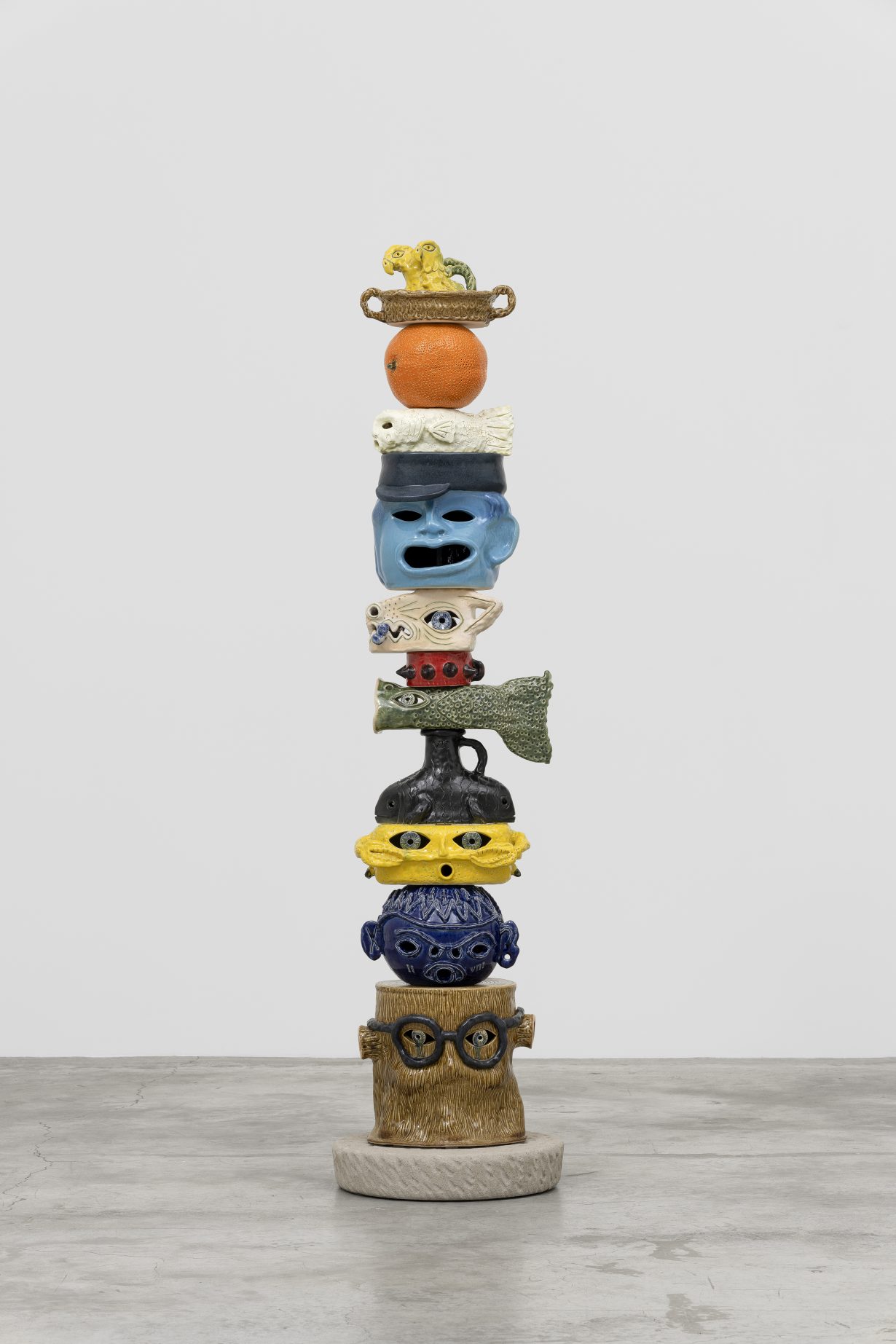In Comme un vieux tatouage at Almine Rech, Paris, Croes pursues a cheerful exploration of the cultural-historical connotations of ceramic art
‘Ceramic withstands time so well,’ the Belgian artist Eric Croes has explained of his chosen medium. ‘I sometimes imagine that my sculptures will be found in thousands of years and that they could prove to be a real mystery for archaeologists.’ Indeed they might. His sculptures are three-dimensional exquisite corpses formed of hybrid representational images shaped in clay, frequently stacked atop each other in totemic columns and more often than not accessorised with cartoonish details. A typical piece in the new work constituting Comme un vieux tatouage (Like an Old Tattoo) might incorporate an irate-looking pre-Columbian deity sprouting crabs and candles from his shoulders (Green South Kensington, all works 2024); or a devilish lucha libre mask supported by an infant’s torso and a coin slot inset into its cranium (Red Tozeur). Surfaces are pricked with perforations, mouths purse into cute Os, eyes twinkle mischievously.
You could reasonably class Croes’s weird and wacky art in the context of a wider trend for madcap ceramics. Yet while some notable contemporary artists working in the medium – Lindsey Mendick, for instance, or Leilah Babirye – have exploited its associations with the domestic and the decorative to grotesque and sometimes subversive effect, Croes aspires neither to make the skin crawl nor, perceptibly at least, to make any political point.

Instead, he pursues a cheerful exploration of the cultural-historical connotations of ceramic art, trawling the archaeological museums and sites of Europe, Japan and South America for imagery to add to his pictorial lexicon. Here, a baize-lined vitrine containing a number of passport-size sketchbooks gives us a glimpse of his magpie approach to collecting references, and how they eventually take shape in clay. Depicting mythical figures, animals and objects, Croes’s doodles are executed with a pleasing line that is one part David Shrigley to two parts Matt Groening. The artist renders many of these drawings into solid form with impressive fidelity, while others, whether by accident or design, have undergone considerable mutation in the course of the arduous process, losing the signifiers that broadcast their origins while gaining others from sources altogether different.
Croes evidently enjoys playing with cultural registers and with the particularities of a medium that’s long sat to one side of fine art. Often, the results are rewardingly daft. Totem Blue Fisherman is a vertical collision of found imagery, pitting an emoji satsuma above, inter alia, an Ensor-esque fright mask and what look like a Tiki-bar god and a Cycladic sheep’s head; the sum effect evokes the psychedelic animations of 1970s stop-motion tyro Bruce Bickford. Other instances – notably Yellow Petit Palais – inspire no such comparison, the whimsical juxtapositions therein (a top-hatted dandy astride a cute Easter hen, for instance) crossing a line between winsome and weird. Nevertheless, it’s easy to forget that, until quite recently, it was still a rarity to see anything that sailed this close to ‘folk art’ in a conventional gallery space. It’s just as difficult to dislike Croes’s egalitarian, mix-n-match approach.
Comme un vieux tatouage at Almine Rech, Paris, 11 January – 24 February
